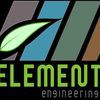
Hill Engineering is a global leader in improving the performance of materials. We are a trusted partner to engineers seeking solutions in design, manufacturing, operations, and sustainment; delivering expertise in residual stress measurement, mechanical design, material testing, structural integrity, and service life extension.
For service-life extension of components, Hill Engineering enables rapid development of residual stress treatments using residual stress engineering. For OEMs seeking fatigue analysis for their products, Hill Engineering delivers reliable recommendations for maximizing component performance and longevity.
For service-life extension of components, Hill Engineering enables rapid development of residual stress treatments using residual stress engineering. For OEMs seeking fatigue analysis for their products, Hill Engineering delivers reliable recommendations for maximizing component performance and longevity.
Services
Hill Engineering believes every materials engineer, designer, and manager should have solid data upon which they can make sound decisions. We have expertise to address issues arising in materials, manufacturing, and design engineering, with unique capabilities in residual stress measurement, material testing, service life assessment, and mechanical design.
Hill Engineering works with you to determine the best measurement method to address your specific engineering challenges. We are the world leader in contour method, but we offer a range of high quality residual stress measurement methods tailored to your needs. For materials engineers, designers and managers seeking residual stress measurements, Hill Engineering is a trusted source for a broad range of best in class measurement capabilities.
Through careful sectioning and precision inspection techniques it is possible to map complex 2D residual stress fields in a wide range of part geometries and materials. The Contour Method was invented circa 2000, patented by Los Alamos National Laboratory, and was rapidly validated and accepted due to its unique capabilities.
The Slitting Method determines residual stress as a function of depth from the surface of a part or coupon. The method has excellent precision and repeatability and is often used in simple coupons (blocks, disks, and cylinders) for process assessment, monitoring, or quality control. Slitting is also useful for parts that are more complex, having been used to find residual stress near a weld toe or at the root of a gear tooth.
Hole Drilling measures near-surface residual stress, and has been standardized in ASTM as E837. The method can be applied to quantify the average residual stress over the depth of a drilled hole (typically 1.0 mm depth). Or, it can be applied to determine the distribution of residual stress versus depth from the surface to a depth of half the hole diameter.
Reviews

Be the first to review Hill Engineering.
Write a Review
